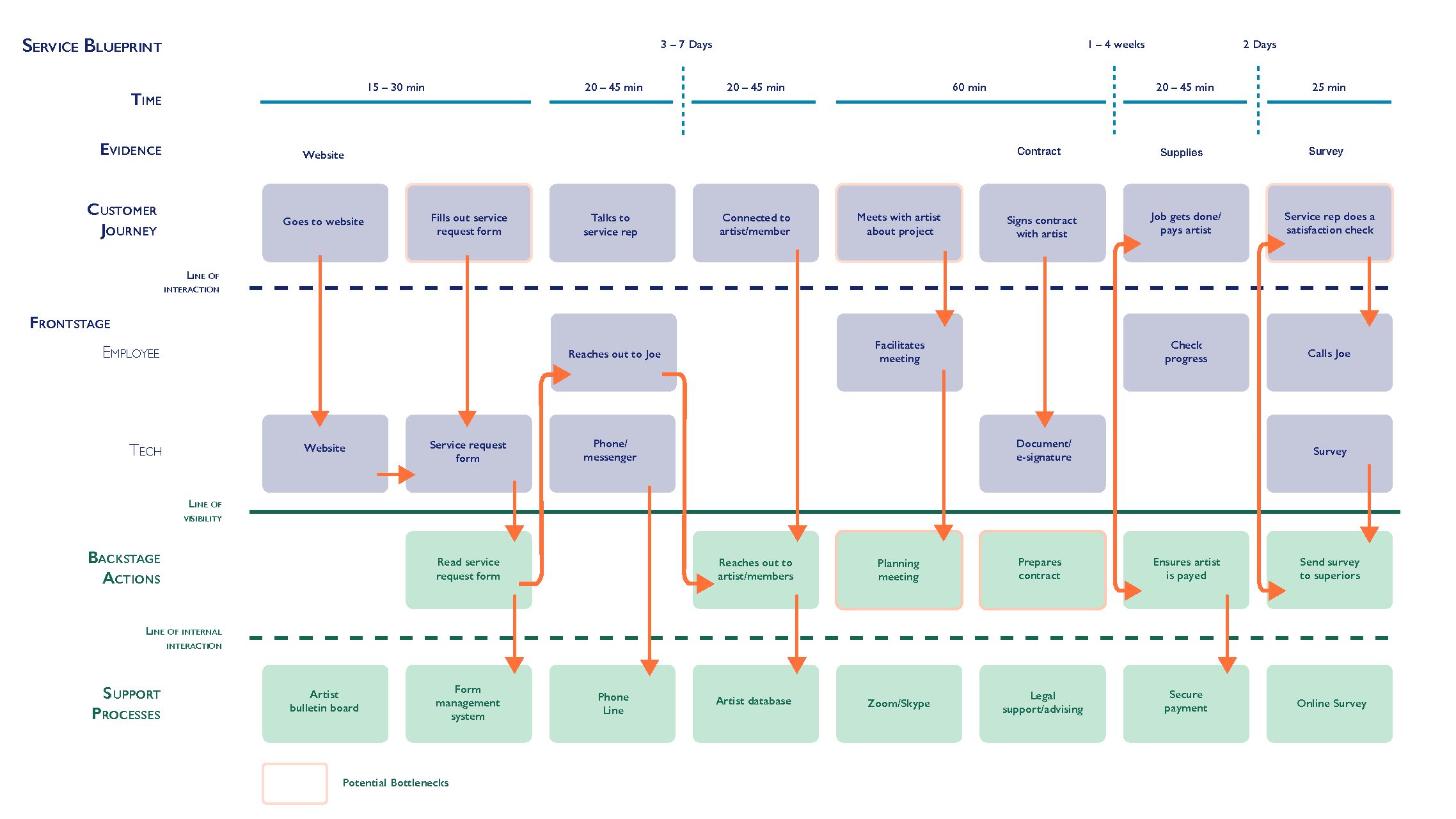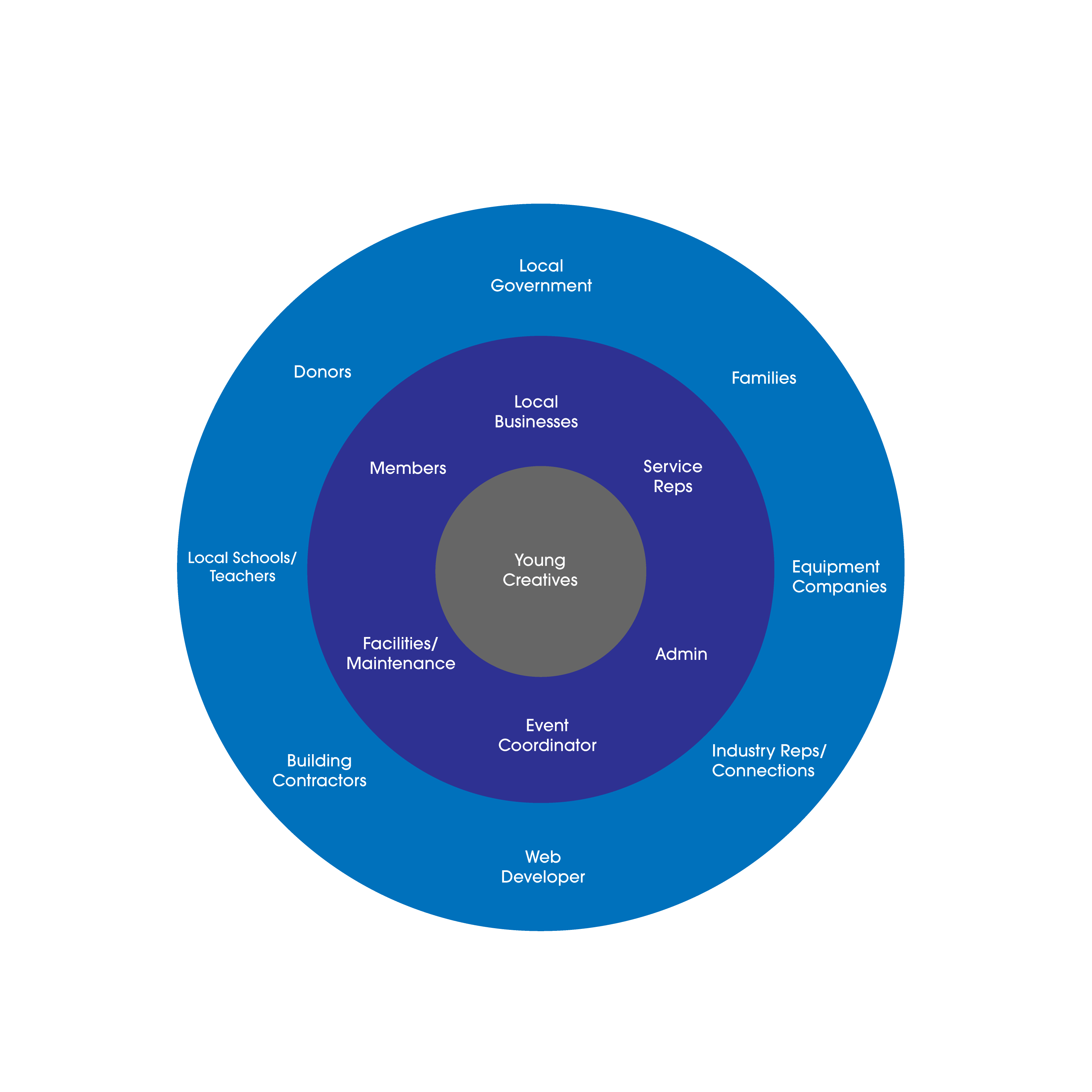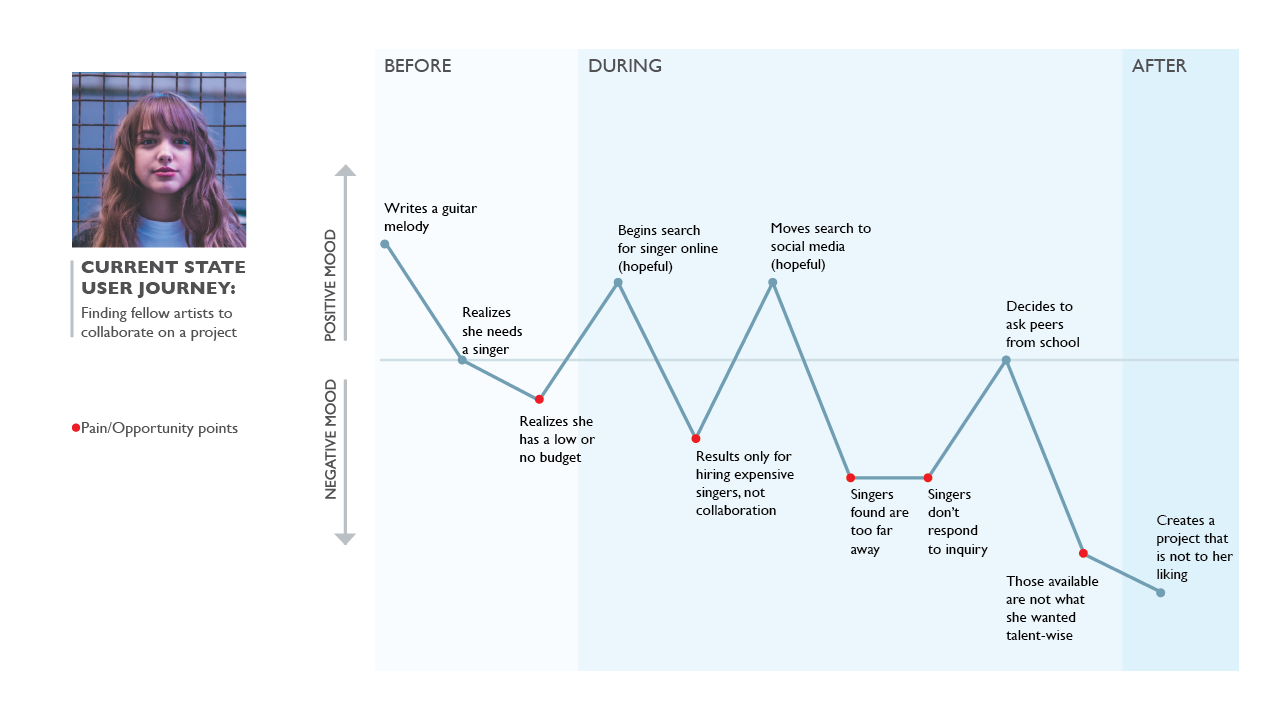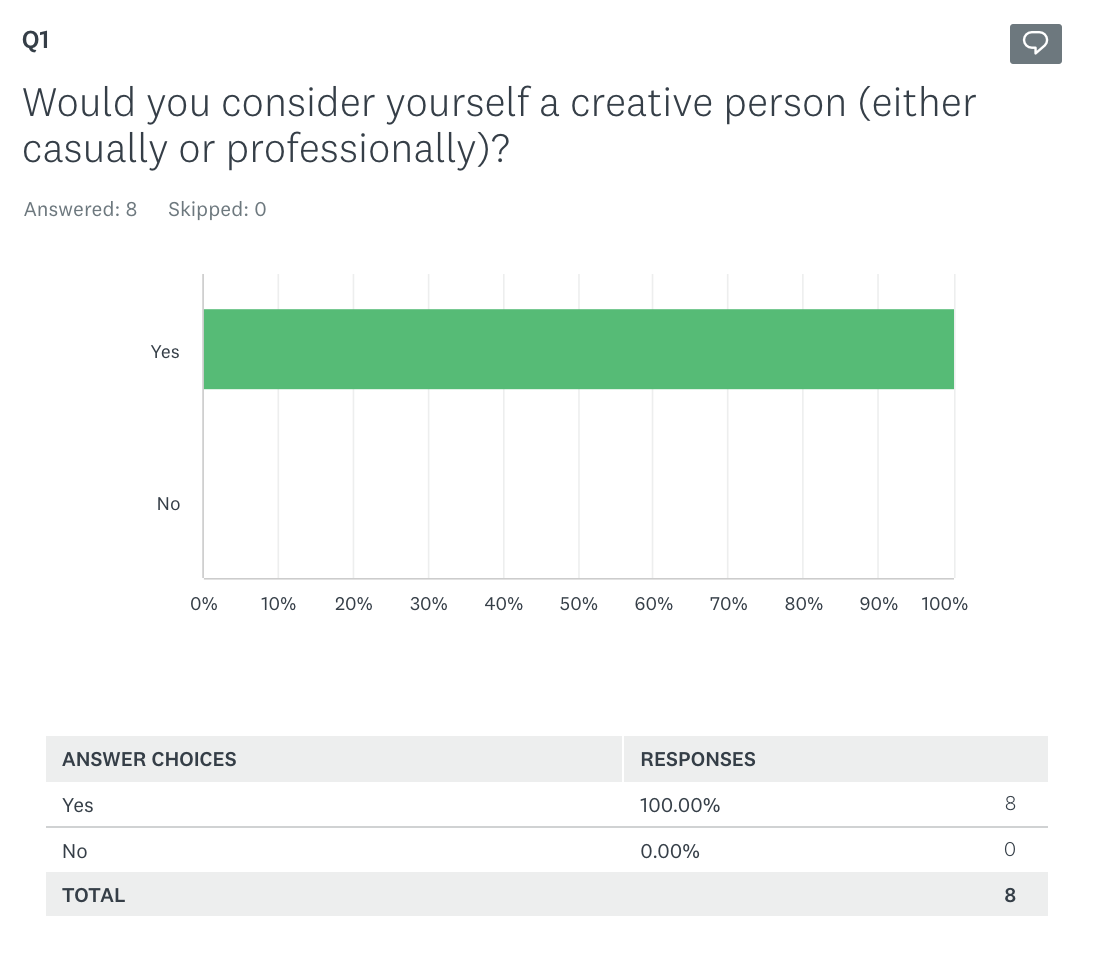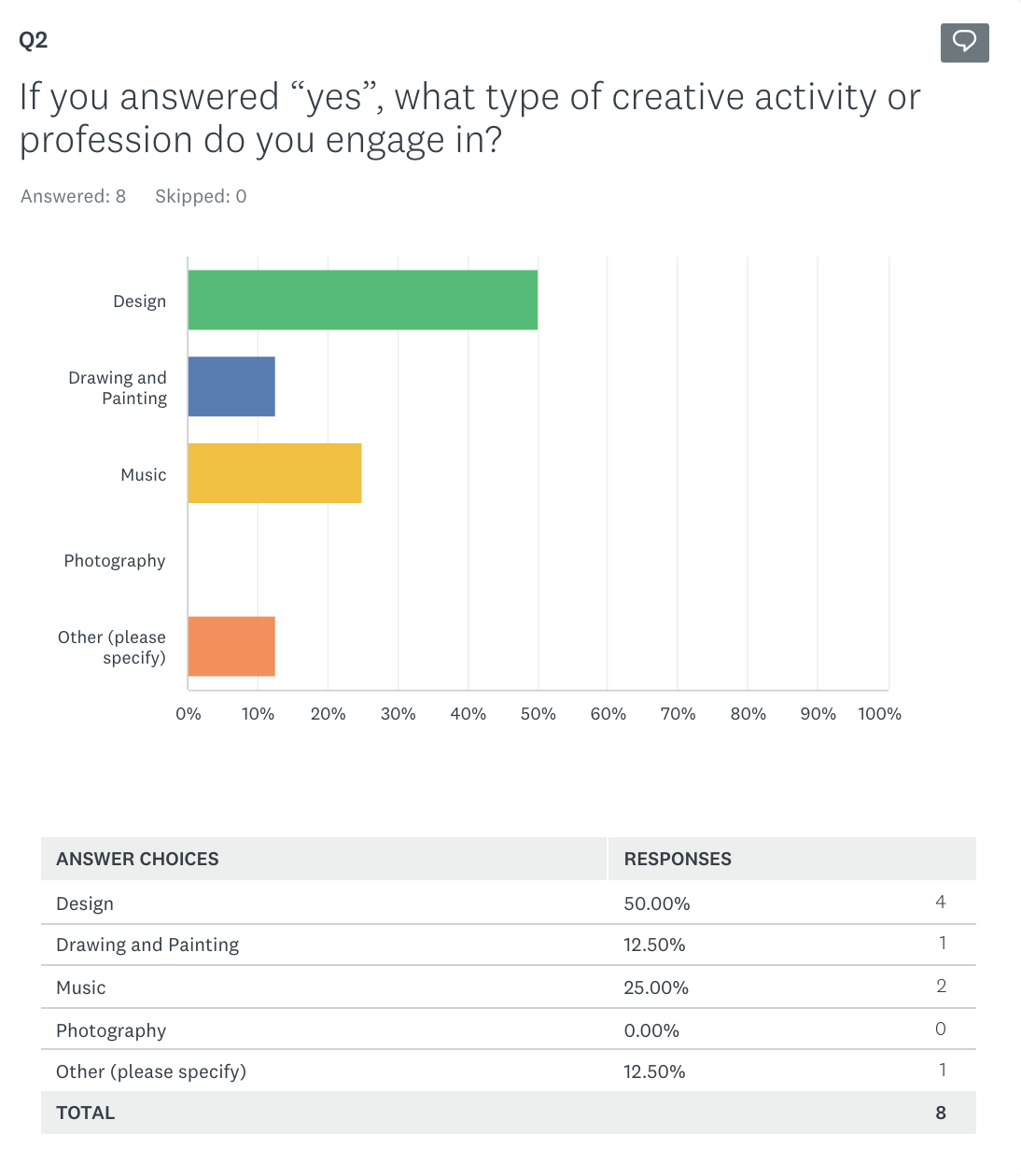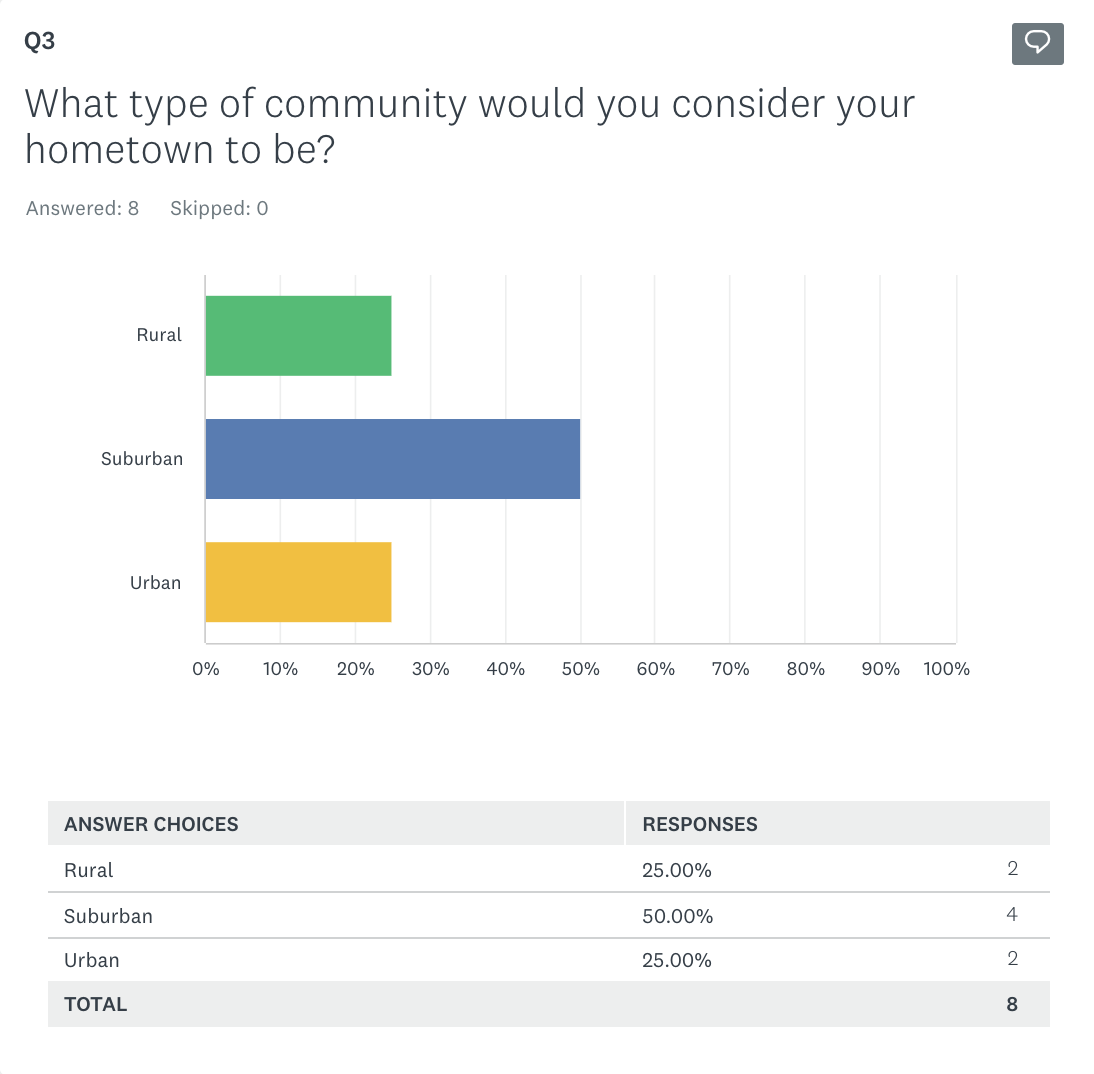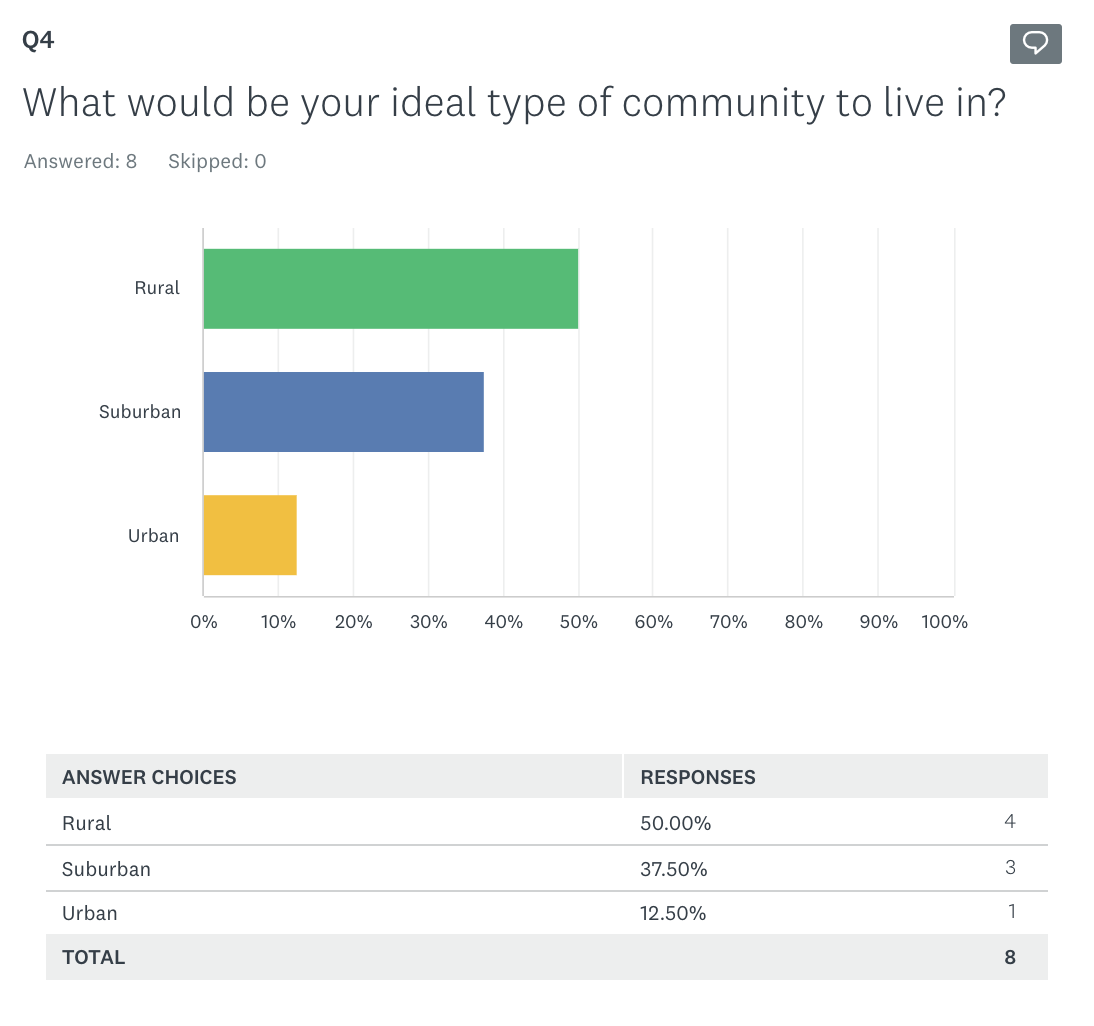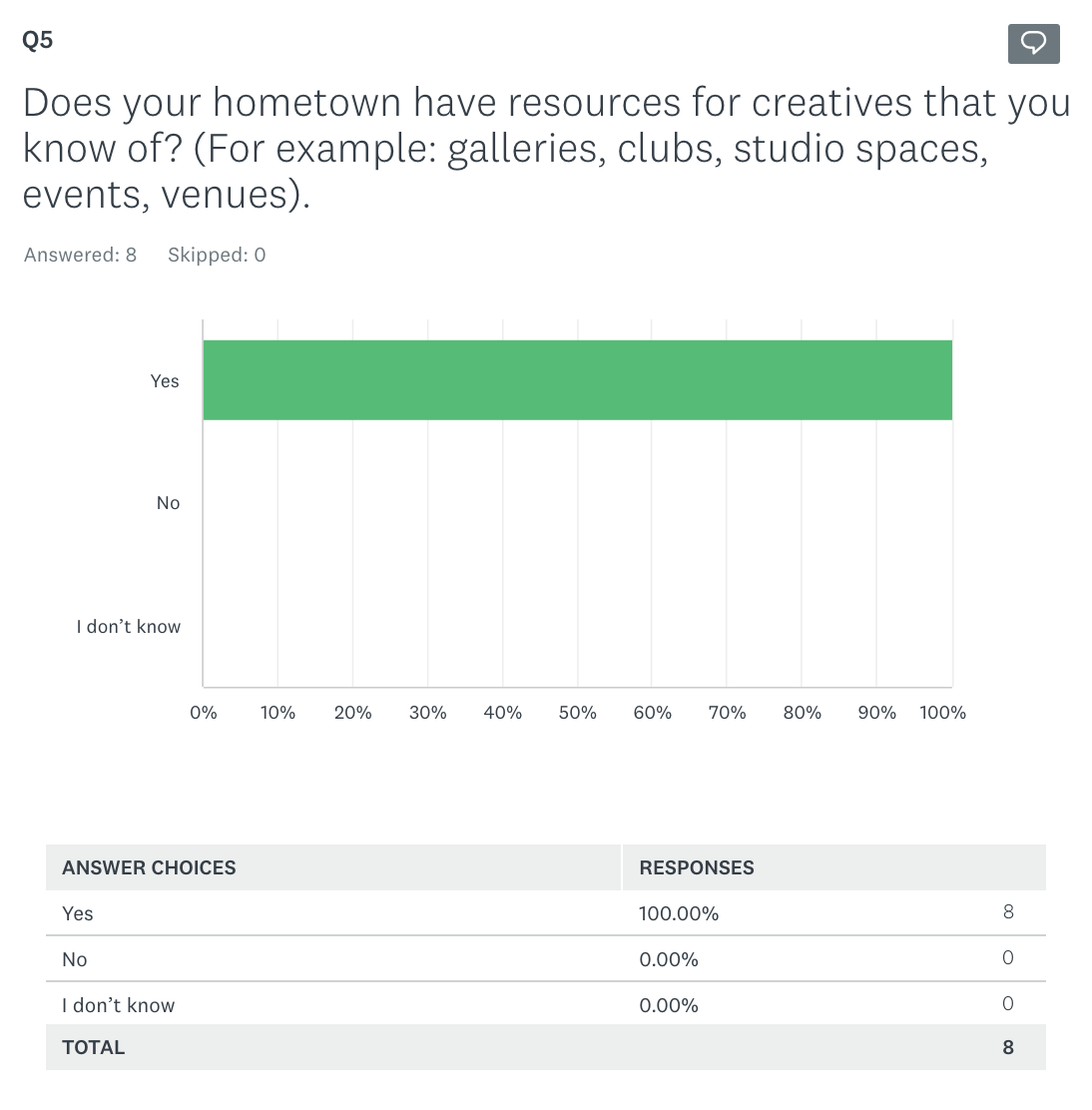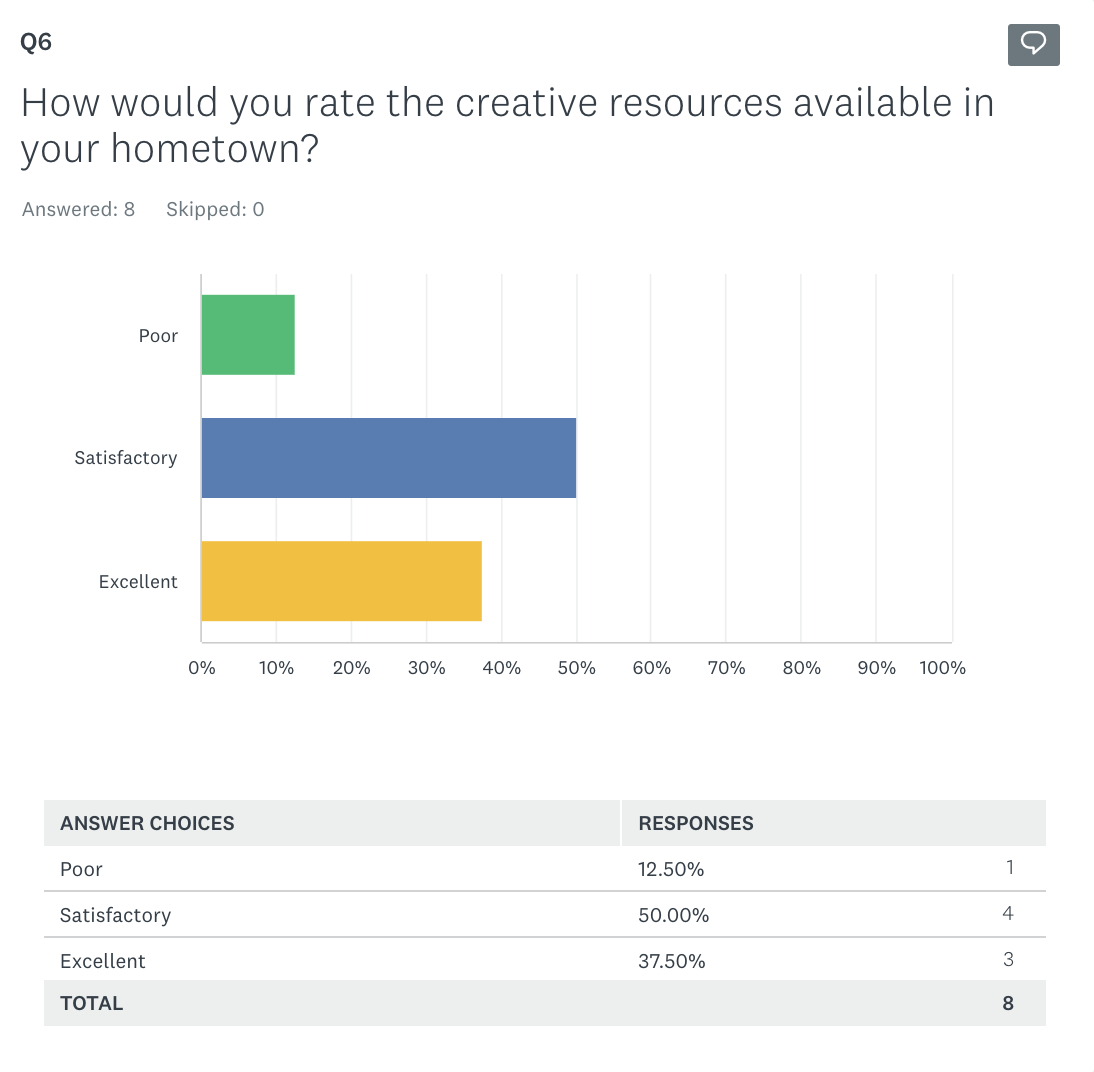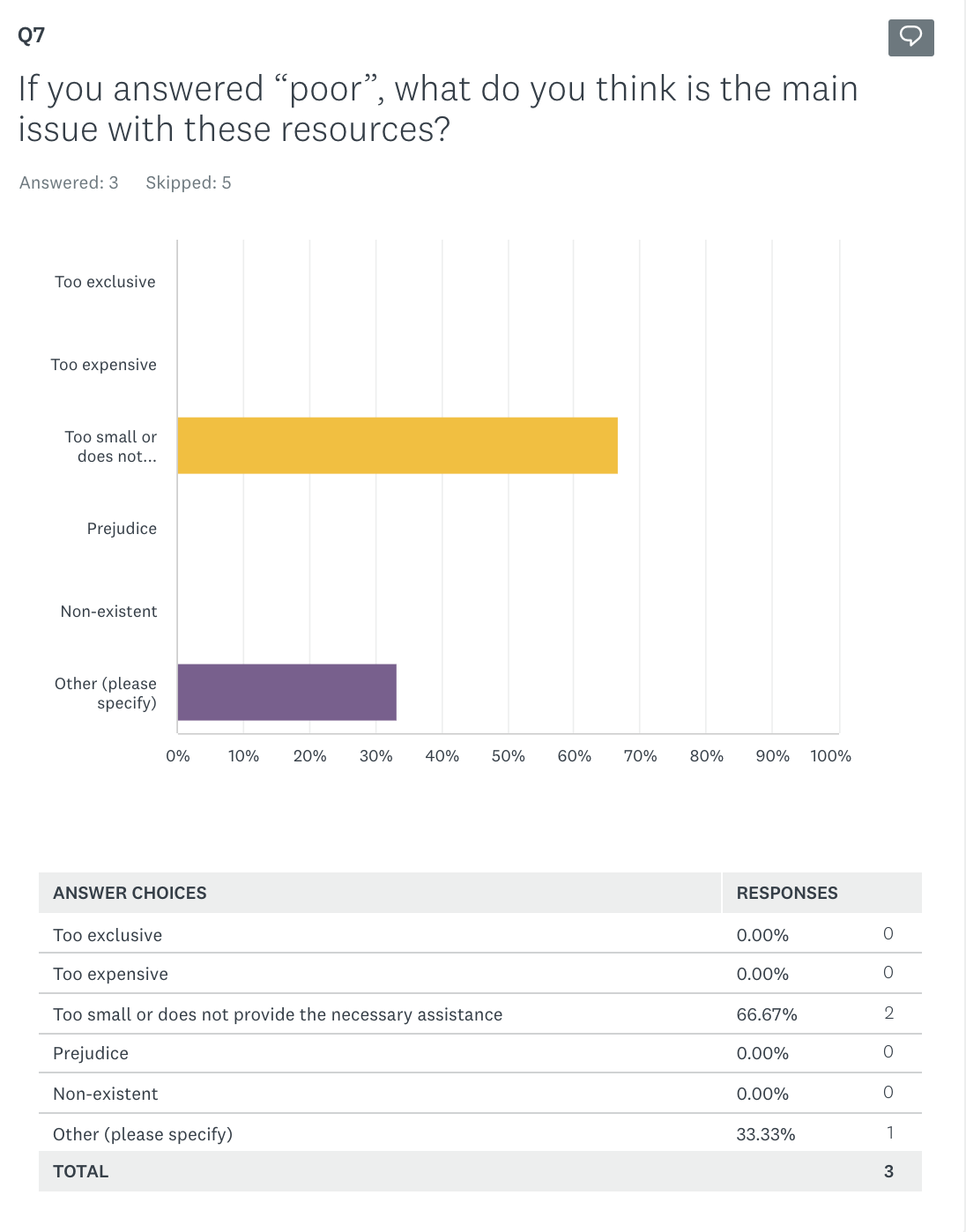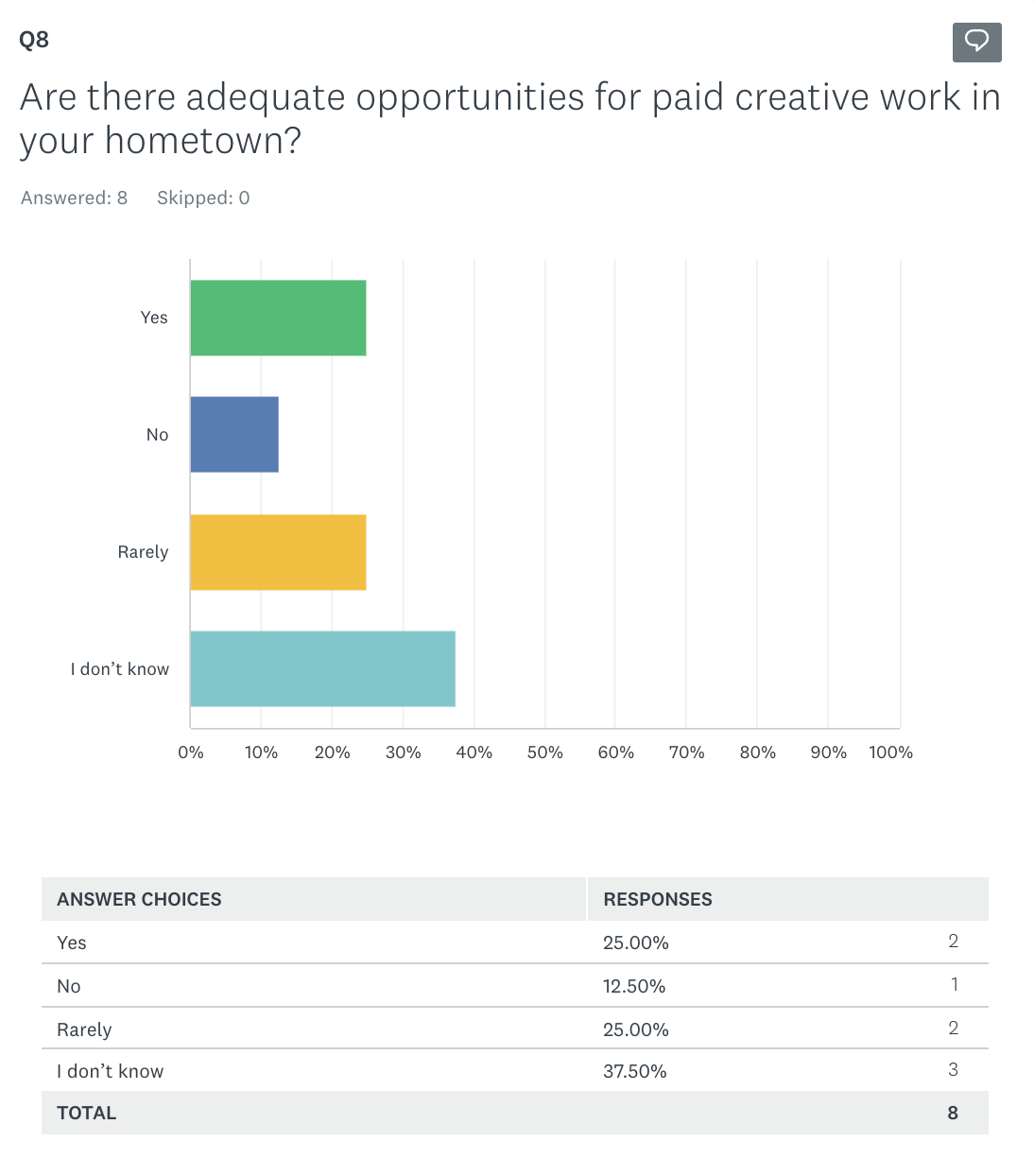As co-project lead with Shannon, I had several different responsibilities. In our early discussions about how we wanted to approach this issue of youth population, it was my suggestion to target creatives and artists to create stronger emotional ties to their home and create more opportunities for work in fields that inspire them.
Throughout the various phases of this project, I created maps to help us ideate the stakeholders of the project, laid out and designed a service blueprint to convey the various stages of the service, and created presentations to show process work. I also conducted primary research in the form of interviews with individuals who originate from small, rural communities about their experiences.
In the later stages of the process, I created the name and identity mark and worked with Shannon to create a mockup website for the service.
Early Ideation
Our initial research began by examining how exactly we wanted to target these groups of creative individuals. The early iterations of our service looked more like a community center which provided several different services. Things like classes, rehearsal spaces, recording studios, and events, on top of job placement. We imagined this providing a third space to the community, a place for young people to spend time developing and learning skills. As we progressed, we felt the need to reexamine the scope of our service as our original plan seemed too broad.
The next phase revolved less around the idea of a physical space and shifted to an arts council which would provide similar services for the community but allow individuals to have a voice on community-based art events. Eventually we further narrowed our scope to facilitate work being done by creatives for local businesses. Thereby creating a bond between young artists and their community which supported their work.
Exploratory Research
In our early exploratory research we created stakeholder maps which laid out the core, primary, and secondary stakeholders of this service as well as territory maps to envision the scope of the service.
We also created a journey map to envision how a user might navigate a creative problem without our service as it was at this stage.
Surveys
Survey questions sought to examine what types of creatives we would be dealing with as well as how they felt about the resources available to them and others in the places that they grew up in.
Interviews
Interviews were conducted with creators from both rural and urban/suburban places about what they felt was lacking from these places, what they liked about them, and what it could take for them to live in a small town.
The most common thread in these discussions was a lack of support in their creative interests. Most agreed they would have felt closer to their roots had there been resources that helped them express their creativity rather than suppressing it. Another common thread was the close-mindedness of their homes. All interviewees cited racism and homophobia as a key deciding factor in their departure. While our service certainly couldn’t solve complex social issues like these it would expose people to each other who wouldn’t necessarily interact otherwise and often this is the best way to educate people on diversity and tolerance.
Challenges
The most significant challenge we faced with our service was in the iterative process of developing how the service was going to address the problem we identified. Once we knew we wanted to work with young creatives in small towns we struggled to pin down the best approach. It was difficult to work with an idea only for research to show that it wasn’t really the issue at hand that needed addressing and that we needed to shift our focus elsewhere.
Learnings
I walked away from this project with a greater understanding of the multifaceted work involved in service design and an appreciation for the research that goes into developing the tools and services that we all use every single day.
My team spent a lot of our time in the ideation phase trying to imagine what we could do to make the problem fit our early service concept. It wasn’t until we surrendered to what the data was showing, and redesigned the service to fit the problem that we really created something we were proud of.
Overall, I learned the importance of remaining fluid in your ideas with a project of this scope, and to not let your assumptions dictate what you think would benefit the affected groups the most. The importance of remaining culturally relativistic cannot be understated when designing a service.
